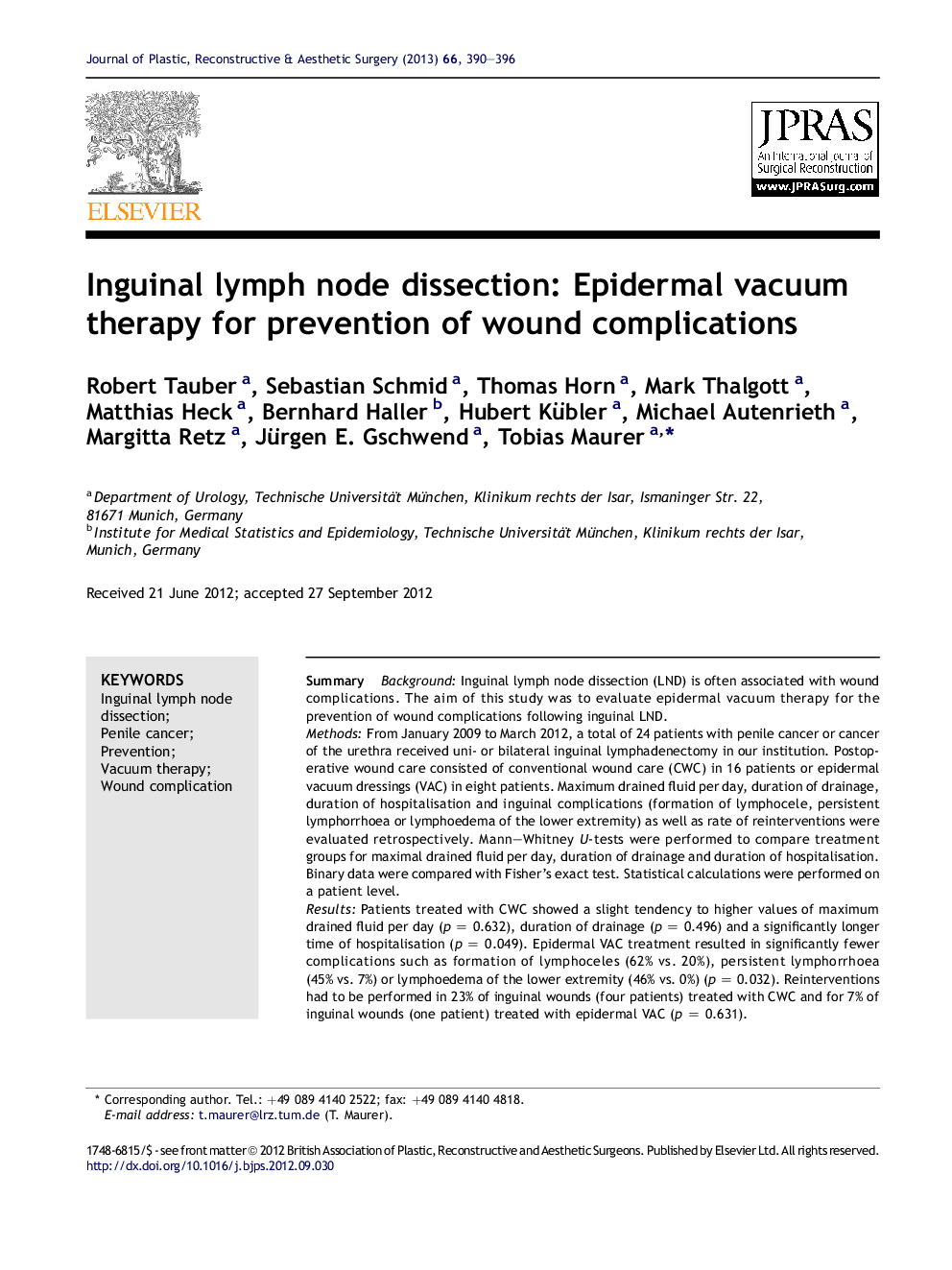| Article ID | Journal | Published Year | Pages | File Type |
|---|---|---|---|---|
| 4117963 | Journal of Plastic, Reconstructive & Aesthetic Surgery | 2013 | 7 Pages |
SummaryBackgroundInguinal lymph node dissection (LND) is often associated with wound complications. The aim of this study was to evaluate epidermal vacuum therapy for the prevention of wound complications following inguinal LND.MethodsFrom January 2009 to March 2012, a total of 24 patients with penile cancer or cancer of the urethra received uni- or bilateral inguinal lymphadenectomy in our institution. Postoperative wound care consisted of conventional wound care (CWC) in 16 patients or epidermal vacuum dressings (VAC) in eight patients. Maximum drained fluid per day, duration of drainage, duration of hospitalisation and inguinal complications (formation of lymphocele, persistent lymphorrhoea or lymphoedema of the lower extremity) as well as rate of reinterventions were evaluated retrospectively. Mann–Whitney U-tests were performed to compare treatment groups for maximal drained fluid per day, duration of drainage and duration of hospitalisation. Binary data were compared with Fisher's exact test. Statistical calculations were performed on a patient level.ResultsPatients treated with CWC showed a slight tendency to higher values of maximum drained fluid per day (p = 0.632), duration of drainage (p = 0.496) and a significantly longer time of hospitalisation (p = 0.049). Epidermal VAC treatment resulted in significantly fewer complications such as formation of lymphoceles (62% vs. 20%), persistent lymphorrhoea (45% vs. 7%) or lymphoedema of the lower extremity (46% vs. 0%) (p = 0.032). Reinterventions had to be performed in 23% of inguinal wounds (four patients) treated with CWC and for 7% of inguinal wounds (one patient) treated with epidermal VAC (p = 0.631).ConclusionsEpidermal VAC following inguinal LND might be advantageous for the prevention of postoperative wound complications. Prospective, controlled studies are warranted to further evaluate efficacy and cost-effectiveness.
